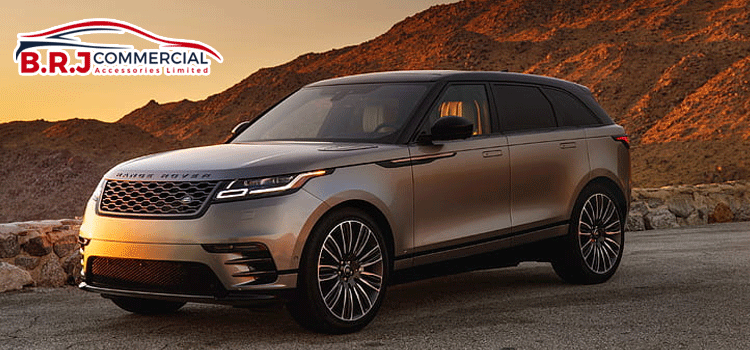What Are The Historical Milestones Of The Range Rover 2.0 Engine?

The Range Rover 2.0 engine represents a critical component in the evolution of the Range Rover brand. Known for its blend of power, efficiency, and off-road capability, the 2.0 engine has undergone numerous updates since its debut. This engine’s journey from early iterations to its current state demonstrates how Land Rover has adapted to changing market demands and technological advancements. The historical milestones of the Range Rover 2.0 engines showcase the brand’s commitment to innovation and performance. Understanding these milestones provides insight into how the engine has evolved to meet the challenges of modern driving and the significance of reconditioned engines in maintaining the vehicle’s performance.
Early Beginnings: Introduction of the Range Rover 2.0 Engine
The Range Rover 2.0 engine made its debut in the mid-1980s as part of the second-generation Range Rover lineup. The introduction of this engine marked a departure from the larger, more powerful engines previously used, reflecting a shift towards more efficient and environmentally friendly options. This early version was a turbocharged four-cylinder engine that offered a balance between performance and fuel efficiency. The initial reception was positive, as it provided a good compromise between power and economy, which was essential for the growing market demand for more fuel-efficient vehicles. The early Range Rover 2.0 engine set the stage for future innovations and established a foundation for the development of subsequent engine versions.
Technological Advancements in the 1990s
During the 1990s, the Range Rover 2.0 engine saw significant technological advancements. This period marked the introduction of improved fuel injection systems and enhanced turbocharging technology, which boosted both power output and fuel efficiency. These upgrades were crucial in meeting the stricter emission standards and consumer expectations for better performance and lower running costs. Additionally, the 1990s version of the Range Rover 2.0 engine featured advanced electronic engine management systems that improved overall driving dynamics and reliability. These advancements solidified the engine’s reputation for combining performance with environmental considerations, reflecting Land Rover’s commitment to innovation and sustainability.
The 2000s: Evolution of Efficiency and Power
The early 2000s brought further evolution to the Range Rover Engine, focusing on enhancing both efficiency and power. This period saw the integration of advanced technologies such as variable valve timing and improved turbocharging systems. These innovations allowed the engine to deliver greater power output while maintaining excellent fuel efficiency. The 2000s model also benefited from improvements in engine materials and manufacturing processes, which contributed to increased durability and reduced maintenance needs. The introduction of these enhancements demonstrated Land Rover’s dedication to refining the Range Rover 2.0 engine to meet the evolving demands of the automotive market, balancing performance with eco-friendliness.
Transition to Modern Technologies: The 2010s
The 2010s were a transformative decade for the Range Rover 2.0 engine, marked by a transition to modern technologies. This era introduced the use of advanced turbocharged engines with direct fuel injection, which significantly improved both power and fuel efficiency. The 2010s models featured updated engine management systems and enhanced turbocharging techniques that further optimized performance. Additionally, this period saw the introduction of hybrid technology, integrating electric propulsion with the traditional 2.0 engine to offer even greater efficiency and lower emissions. These advancements reflected Land Rover’s response to growing environmental concerns and the demand for more sustainable driving options.
Current Generation: Refinement and Performance
The current generation of the Range Rover 2.0 engine, introduced in the late 2010s and early 2020s, represents the culmination of decades of technological advancements and refinements. This latest version incorporates cutting-edge technologies such as advanced hybrid systems, intelligent turbocharging, and sophisticated electronic controls. The engine’s performance has been further refined to offer a seamless blend of power, efficiency, and driving comfort. Modern features include adaptive engine management systems that adjust to driving conditions in real-time, enhancing both performance and fuel economy. The current Range Rover 2.0 engine continues to build on its legacy, offering a high level of refinement and performance to meet the needs of today’s drivers.
Impact of Reconditioned Engines on Performance
Reconditioned engines play a crucial role in maintaining the performance and reliability of the Range Rover 2.0 engine. As vehicles age, their engines may experience wear and tear, affecting overall performance and efficiency. Reconditioning involves a thorough refurbishment process, including the replacement of worn components and the application of advanced technologies to restore the engine to near-original condition. For owners of older Range Rover models, opting for a reconditioned 2.0 engine can provide a cost-effective solution to extend the vehicle’s lifespan while preserving its performance. Reconditioned engines offer a practical alternative to engine replacement, ensuring that the Range Rover continues to deliver reliable and efficient performance.
The Future of the Range Rover 2.0 Engine
Looking ahead, the future of the Range Rover 2.0 engine is likely to be shaped by ongoing advancements in automotive technology. The focus will continue to be on improving efficiency, performance, and environmental sustainability. Emerging technologies such as electric and hybrid propulsion systems are expected to play a significant role in the next generation of Range Rover engines. Additionally, advancements in materials science and manufacturing processes will contribute to further enhancements in engine performance and durability. The future of the RangeRover 2.0 engine promises exciting developments that will continue to push the boundaries of automotive engineering and address the evolving needs of drivers.
Conclusion:
The historical milestones of the RangeRover 2.0 engine reflect a legacy of innovation, performance, and adaptability. From its early beginnings to its current state, the engine has undergone significant advancements that have enhanced its power, efficiency, and overall driving experience. The evolution of the RangeRover 2.0 engine demonstrates Land Rover’s commitment to embracing new technologies and responding to market demands. The role of reconditioned engines in maintaining the performance of older models highlights the importance of preserving this legacy while addressing the needs of modern drivers. As the automotive industry continues to evolve, the Range Rover 2.0 engines will remain a testament to Land Rover’s dedication to excellence and innovation in engineering.


